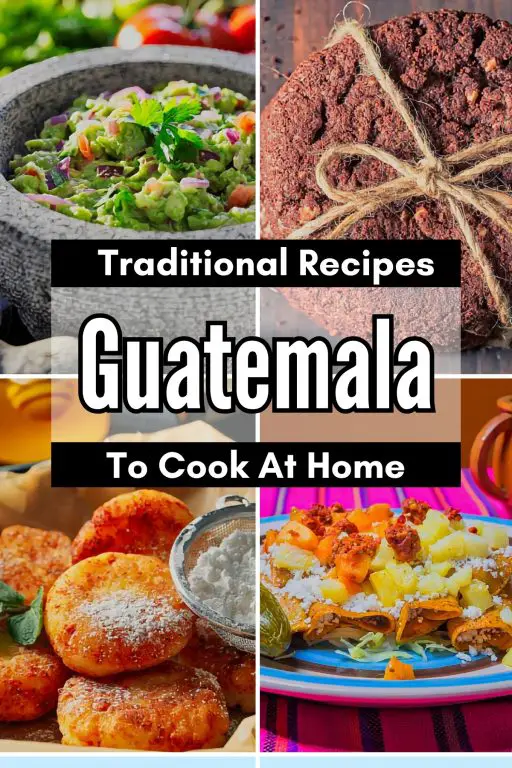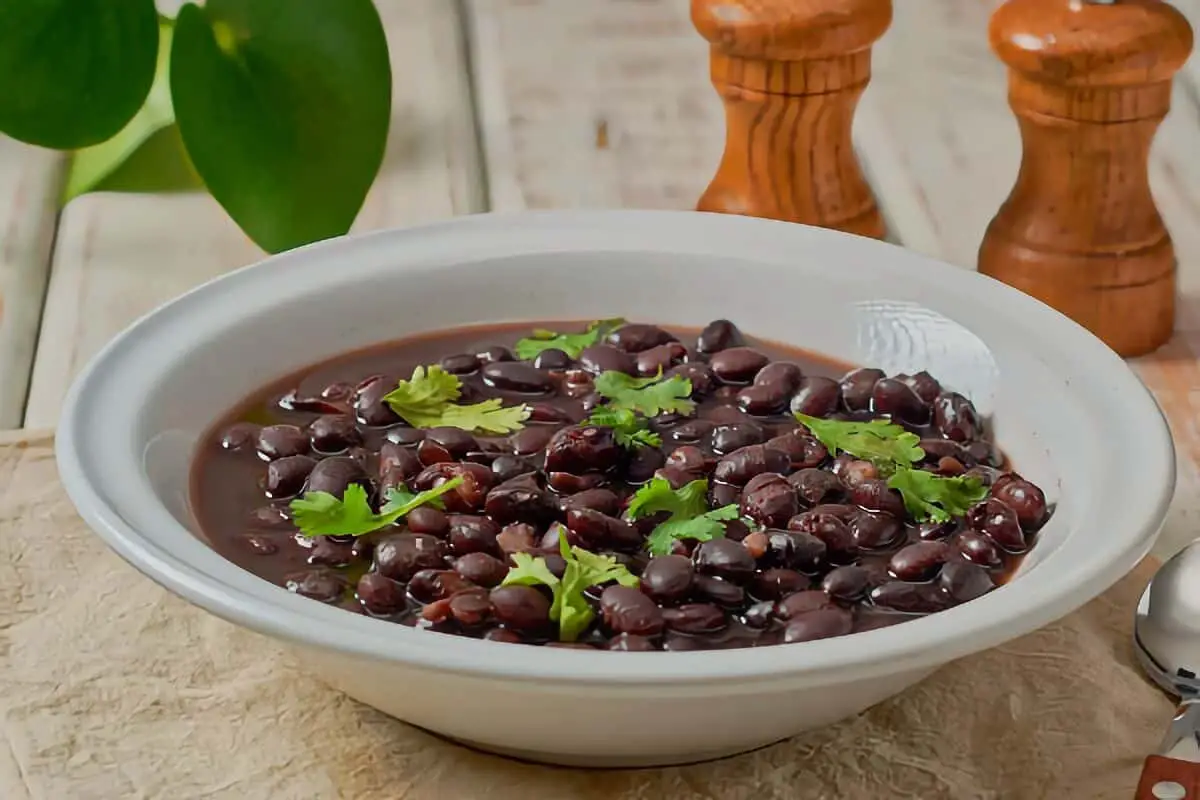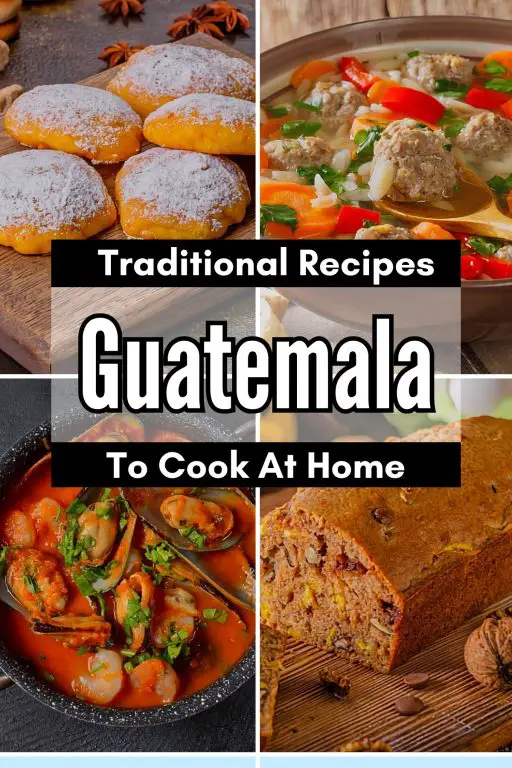I took a great Frijoles Volteados recipe cooking class in Cobán, Guatemala. Cob’n stands out because of its beautiful landscapes, unique plants, and rich indigenous culture. It is located in the highlands of Guatemala, surrounded by mountains and coffee plantations. There are local markets, parks, and historical sites for people to visit.
In cooking class, we made frijoles volteados, which are refried black beans. The teacher explained that beans are an important part of food in Guatemala. The ingredients for the Frijoles Volteados recipe were basic but important: black beans, garlic, and spices. We started by cooking the beans until they were soft, then we blended them into a smooth mixture.
I was struck by how simple the Frijoles Volteados recipe is and how important beans are in Guatemalan diets. As we mashed the cooked beans, I saw the creamy texture that formed, which is typical for this dish. The teacher said that adding seasoning makes it taste better.
When we finally tasted the frijoles volteados, I thought they were rich and comforting. The beans were seasoned just a little and had a hint of garlic flavor. It was easy to spread on tortillas or rice. The Frijoles Volteados recipe is a flexible option that can be served as either a side dish or a main dish.
People and restaurants in Cobán make Frijoles Volteados. This dish is often served at family gatherings and special occasions, showing how important it is in the culture. Some families have different options, like cheese or salsa.
After the cooking class, I took some time to check out Cob’ n’s local markets and discovered some fresh ingredients for Guatemalan cooking. The markets were full of fresh fruits and vegetables, spices, and handmade items. Going to local vendors helped me understand what is involved in traditional recipes, such as the Frijoles Volteados recipe.
My time in Cobán was both interesting and enjoyable. I found out how to prepare a traditional dish and why beans play a significant role in Guatemalan culture. The Frijoles Volteados recipe demonstrates that even basic ingredients can create tasty dishes. No matter if it’s made at home or in a restaurant, it’s a key part of Guatemalan food and shows the flavors and traditions of the region.
Ingredients For the Guatemalan Frijoles Volteados Recipe
Dried Black or Red Beans
Water
Chopped Fresh Onion
Minced Cloves Garlic
Chopped Fresh Green Bell Pepper
Chopped Fresh Red Bell Bepper
Vegetable Oil
Ground Cumin
Salt
Chopped Fresh Cilantro
Cooking Instructions For the Guatemalan Frijoles Volteados Recipe
Preparation – Rinse the beans thoroughly under running water to remove any debris. Place the beans in a large bowl and cover with water. Allow them to soak overnight. Drain and rinse the soaked beans before cooking.
Cooking the Beans – In a large pot, add the soaked and rinsed beans along with 8 cups of water. Bring the water to a boil over medium-high heat. Reduce the heat to low, cover the pot, and let the beans simmer for about 1 to 1 1/2 hours or until they are tender. Stir occasionally and add more water if necessary to keep the beans submerged.
Sautéing the Aromatics – Heat the vegetable oil in a separate pan over medium heat. Add the chopped onion and cook until it becomes translucent. Stir in the minced garlic and cook for an additional minute. d. Add the chopped green and red bell peppers to the pan and sauté until they become tender.
Mashing the Beans – Once the beans are tender, remove about 1 cup of cooked beans from the pot and set them aside. Using a potato masher or the back of a spoon, mash the remaining beans in the pot until they reach a smooth consistency. Return the reserved whole beans to the pot and mix them in.
Seasoning the Dish – Sprinkle the ground cumin evenly over the mashed beans. Add salt to taste and stir well to incorporate the seasoning. Continue cooking the beans over low heat for an additional 10-15 minutes to allow the flavors to meld together.
Serving – Transfer the Guatemalan Frijoles Volteados to a dish. Garnish with fresh chopped cilantro. Serve hot as a main dish or as a side with rice, tortillas, or your preferred accompaniments.
 5 Essiential Ingredients for Guatemalan Food
5 Essiential Ingredients for Guatemalan Food
Guatemalan cuisine is deeply influenced by Mayan traditions, Spanish heritage, and locally sourced ingredients, resulting in a unique flavor profile that combines earthy, tangy, and spicy notes. Among the essential ingredients, corn stands out as a foundational staple. Known as maíz in Spanish, corn is the backbone of many dishes and a cultural symbol in Guatemala. It is used in various forms, from tortillas that accompany nearly every meal to tamales, which are made with a dough of masa and wrapped in banana leaves. Corn also features in drinks like atol de elote, a warm, sweet corn beverage. This ingredient’s versatility and accessibility make it a crucial part of Guatemalan meals, representing sustenance and tradition.
Chilies are another key ingredient that adds both flavor and heat to Guatemalan food. Though the cuisine is not as intensely spicy as other Central American foods, it often incorporates varieties like the guajillo, cobán, and *pasa* peppers, which add depth without overpowering the dish. These chilies are used in salsas, stews, and sauces, such as the rich sauce in pepian, a traditional meat stew. The use of mild to medium spiciness gives Guatemalan dishes their distinctive warmth and aroma, allowing the natural flavors of other ingredients to shine through.
Tomatoes are essential for the base of many Guatemalan recipes, providing acidity, richness, and natural sweetness. Often roasted to deepen their flavor, tomatoes are combined with chilies, onions, and spices to create rich sauces that are integral to dishes like hilachas (shredded beef stew) and jocon (a green chicken stew). The incorporation of tomatoes reflects Spanish influences while highlighting the country’s abundance of fresh produce.
Another indispensable ingredient is pepitoria, or pumpkin seeds. Ground pumpkin seeds are used to thicken sauces, add texture, and enhance flavors, particularly in stews and traditional dishes. In pepian, for instance, pepitoria gives the sauce a nutty undertone that balances the spices and brings a subtle richness. This ingredient not only adds depth but also reflects Guatemala’s pre-Columbian culinary heritage, as pumpkin seeds have been used in the region for centuries.
Finally, achiote (annatto) brings vibrant color and a mild, peppery flavor to Guatemalan food. The seeds are often ground into a paste or oil and used as a seasoning or natural colorant, giving dishes an appealing reddish hue. Achiote’s subtle flavor enhances recipes like recado rojo, a red sauce for meats and poultry. Together, these five ingredients — corn, chilies, tomatoes, pepitoria, and achiote — embody the flavors, history, and culinary creativity of Guatemalan cuisine, forming the foundation of its most cherished dishes.
10 Reasons I Love Guatemalan Food
1. Rich Cultural Influence – Guatemalan food is a tapestry of indigenous Mayan traditions and Spanish influences, creating a unique blend of flavors and techniques. This cultural richness is evident in every dish, from hearty stews to tamales, which are made with ancient methods and local ingredients that reflect the country’s history.
2. Fresh, Local Ingredients – The use of fresh, locally-sourced ingredients is a hallmark of Guatemalan cuisine. Vegetables, fruits, meats, and herbs are commonly grown or sourced nearby, adding to the freshness and authenticity of the dishes. From ripe tomatoes and vibrant chilies to fresh corn and herbs, Guatemalan food celebrates nature’s bounty.
3. Variety of Flavors – Guatemalan food offers a dynamic mix of flavors, from the mild and savory to the slightly spicy. Each dish is thoughtfully balanced, often combining elements like sweet, tangy, and spicy in a single recipe. For instance, the classic dish pepian has a blend of roasted vegetables, spices, and chili peppers, creating a depth of flavor that’s hearty and aromatic.
4. Traditional Cooking Techniques – Many Guatemalan recipes use traditional cooking techniques passed down through generations. Slow roasting, open-fire cooking, and clay pot preparation bring out authentic flavors and add a unique taste to dishes. These methods honor the roots of Guatemalan food, connecting each dish to a rich culinary past.
5. Diversity of Regional Dishes – Guatemala’s varied geography — from coastal regions to mountainous highlands — contributes to the diversity of regional foods. Each region has specialties that showcase the local environment and resources. The highlands, for instance, are known for hearty stews like kak’ik, a turkey soup with a blend of spices, while coastal areas feature more seafood-based dishes.
6. Colorful and Appealing Presentation – Guatemalan food is as visually appealing as it is delicious. Dishes are often vibrant, with colors from ingredients like tomatoes, chilies, and achiote, which adds a rich red hue. This lively presentation makes Guatemalan food inviting and showcases the beauty of local produce and spices.
7. Nutritious and Balanced Meals – Guatemalan dishes often incorporate a balanced mix of protein, vegetables, and grains. Corn, beans, and rice are staples, providing energy, while proteins like chicken, pork, and fish are commonly paired with nutrient-dense vegetables. This balance makes Guatemalan meals both satisfying and nutritious.
8. The Role of Maize (Corn) – Corn, or maíz, is central to Guatemalan cuisine and cultural identity. Used to make tortillas, tamales, and drinks like atol de elote, corn is a versatile ingredient that’s celebrated in countless ways. It represents the indigenous heritage and plays an essential role in nearly every meal, highlighting Guatemala’s deep connection to this staple crop.
9. Soulful Soups and Stews – Guatemalan cuisine is known for its rich soups and stews that bring comfort and warmth, like hilachas (shredded beef stew) and jocon (green chicken stew). These dishes are not only filling but deeply flavorful, often made with a blend of local spices, vegetables, and herbs that make each spoonful satisfying and complex.
10. Emphasis on Family and Community – Food in Guatemala is often a communal experience, with dishes designed to be shared. Meals like fiambre, a traditional salad served during Día de los Santos, bring families together in celebration. This sense of community and the tradition of sharing food adds another layer to the enjoyment of Guatemalan cuisine, making it not just about the food itself but about the connections it fosters.
These ten reasons capture what makes Guatemalan food unique, from its deep roots in tradition and family to its fresh ingredients and flavorful dishes. Each meal tells a story of the country’s history, geography, and cultural pride, making Guatemalan cuisine a truly special experience.
Most Popular Spices Used by Guatemalan Locals
Guatemalan cuisine is known for its balanced and flavorful use of spices, combining native ingredients with those introduced by Spanish settlers to create a rich tapestry of taste. One of the most prominent spices in Guatemalan cooking is Qchiote (annatto), which adds a mild peppery flavor and vibrant red hue to various dishes. Often ground into a paste, achiote is used in stews, tamales, and rice, infusing the food with an earthy flavor that complements other ingredients. Its coloring properties also enhance the visual appeal of traditional recipes, making it a versatile favorite among locals.
Another essential spice is Pepitoria, or ground pumpkin seeds. Unique to Guatemalan and neighboring Central American cuisines, pepitoria is often used to thicken sauces and add depth to stews, especially in dishes like pepian, where it contributes a subtle nutty flavor. Combined with roasted tomatoes, chilies, and other spices, pepitoria adds a distinctive richness that embodies the essence of Guatemalan cooking. This practice of using seeds as a seasoning reflects ancient Mayan cooking traditions, which continue to influence modern Guatemalan flavors.
Cinnamon is also widely used, particularly in sweet and savory dishes that highlight Guatemalan cuisine’s Spanish influence. Known locally as canela, cinnamon is a common ingredient in mole sauces, as well as in desserts and beverages like atol de elote (a corn-based drink). Its warm, aromatic flavor adds complexity to various recipes, bridging the flavors of local ingredients with a Spanish touch. Often paired with other spices, cinnamon is essential in creating the nuanced flavors found in Guatemalan comfort foods.
Allspice is another popular spice in Guatemala, bringing a warm, slightly peppery note to savory dishes and marinades. This spice, derived from the dried berries of the pimento tree, is known as *pimienta gorda* in Guatemala and is commonly used in soups, stews, and meats. Its subtle complexity enhances dishes without overpowering them, offering a rounded flavor profile that highlights the country’s love for balanced seasoning.
Chili Peppers such as cobán and guajillo varieties are staples for adding heat and depth. Though Guatemalan cuisine is not typically very spicy, the addition of these chilies gives dishes a gentle warmth and smokiness. Ground or used whole, these chilies appear in everything from salsas to stews, like the renowned kak’ik, a spicy turkey soup from the highlands. Together, these spices — achiote, pepitoria, cinnamon, allspice, and chili peppers — define the flavors of Guatemalan food, infusing it with tradition and the unique balance of local and global influences.
FAQ For the Guatemalan Frijoles Volteados Recipe
Q: What are the main ingredients in the Guatemalan Frijoles Volteados recipe?
A: The Guatemalan Frijoles Volteados recipe primarily consists of black beans, which are the star ingredient, and a variety of seasonings. To make this dish, you’ll need cooked black beans, garlic, onion, and salt, along with a bit of oil for frying. These ingredients come together to create a rich and flavorful bean paste that is typically served alongside rice or tortillas. The simplicity of the ingredients allows the natural flavors of the beans to shine through, making it a beloved staple in Guatemalan cuisine.
Q: How do you prepare the beans for the Guatemalan Frijoles Volteados recipe?
A: To prepare the beans for the Guatemalan Frijoles Volteados recipe, start by cooking dried black beans until they are soft, which usually takes about one to two hours. If you prefer a quicker method, using canned beans is an option as well. After cooking, drain the beans and set them aside. In a skillet, heat some oil and sauté chopped onions and garlic until they are translucent before adding the beans. Mash the mixture until it reaches a creamy consistency, ensuring it is well combined and seasoned to taste.
Q: What are some common serving suggestions for the Guatemalan Frijoles Volteados recipe?
A: The Guatemalan Frijoles Volteados recipe is versatile and can be served in various ways. A common serving suggestion is to enjoy it with warm corn tortillas and rice, creating a hearty meal. Additionally, you can top the beans with fresh ingredients like avocado, cilantro, or diced tomatoes to add extra flavor and texture. This dish can also serve as a side for grilled meats or a base for other toppings, making it a perfect addition to any Guatemalan-inspired feast.
Q: Can you make the Guatemalan Frijoles Volteados recipe in advance?
A: Yes, the Guatemalan Frijoles Volteados recipe can be made in advance, making it a convenient option for meal prep. After cooking the beans and preparing the paste, allow it to cool and store it in an airtight container in the refrigerator for up to a week. When you are ready to serve, simply reheat the beans on the stove or in the microwave, adding a little water if needed to achieve the desired consistency. This not only saves time but also allows the flavors to develop further as they sit.
Q: Are there any variations to the Guatemalan Frijoles Volteados recipe?
A: Yes, there are several variations to the Guatemalan Frijoles Volteados recipe that cater to different tastes and dietary preferences. Some people may choose to add spices like cumin or chili powder to give the dish an extra kick. Additionally, you can incorporate other ingredients such as diced bell peppers or jalapeños for added flavor and heat. Whether you prefer a spicier version or a more traditional approach, the core elements of the recipe remain the same, highlighting the deliciousness of the black beans.

Guatemalan Frijoles Volteados Recipe
Ingredients
- 2 cups beans dried black or red
- 8 cups water
- 1 onion chopped
- 4 cloves garlic minced
- 1 bell pepper green chopped
- 1 bell pepper red chopped
- 2 tablespoons vegetable oil
- 1 teaspoon cumin ground
- Salt to taste
- cilantro Fresh chopped (for garnish
Equipment
- Large pot for cooking the beans
- Strainer or colander For rinsing the soaked beans.
- Pan For sautéing the aromatics.
- Potato masher or spoon For mashing the beans.
- Serving dish For presenting the dish.
- 6: Knife and cutting board For chopping the onion and bell peppers.
- 7: Spoon or ladle For stirring and the Frijoles Volteados.
Instructions
- a. Rinse the beans thoroughly under running water to remove any debris.
- b. Place the beans in a large bowl and cover with water. Allow them to soak overnight.
- c. Drain and rinse the soaked beans before cooking.
- a. In a large pot, add the soaked and rinsed beans along with 8 cups of water.
- b. Bring the water to a boil over medium-high heat.
- c. Reduce the heat to low, cover the pot, and let the beans simmer for about 1 to 1 1/2 hours or until they are tender.
- d. Stir occasionally and add more water if necessary to keep the beans submerged.
- a. Heat the vegetable oil in a separate pan over medium heat.
- b. Add the chopped onion and cook until it becomes translucent.
- c. Stir in the minced garlic and cook for an additional minute.
- d. Add the chopped green and red bell peppers to the pan and sauté until they become tender.
- a. Once the beans are tender, remove about 1 cup of cooked beans from the pot and set them aside.
- b. Using a potato masher or the back of a spoon, mash the remaining beans in the pot until they reach a smooth consistency.
- c. Return the reserved whole beans to the pot and mix them in.
- a. Sprinkle the ground cumin evenly over the mashed beans.
- b. Add salt to taste and stir well to incorporate the seasoning.
- c. Continue cooking the beans over low heat for an additional 10-15 minutes to allow the flavors to meld together.
- a. Transfer the Guatemalan Frijoles Volteados to a dish.
- b. Garnish with fresh chopped cilantro.
- c. Serve hot as a main dish or as a side with rice, tortillas, or your preferred accompaniments.




4 comments
Super flavorful, these refried beans were an excellent base for other dishes.
I cant believe they didnt mention the secret ingredient for perfect Guatemalan Frijoles Volteados! Its all about that touch of cinnamon, trust me, it takes the dish to a whole new level. Try it next time!
I cant believe they didnt mention the secret ingredient for the perfect Guatemalan Frijoles Volteados! Its like leaving out the punchline to a joke. Come on, spill the beans (pun intended)!
I cant believe they didnt include the secret ingredient for the Guatemalan Frijoles Volteados recipe! Its like theyre holding out on us. What are they trying to hide? 🤔